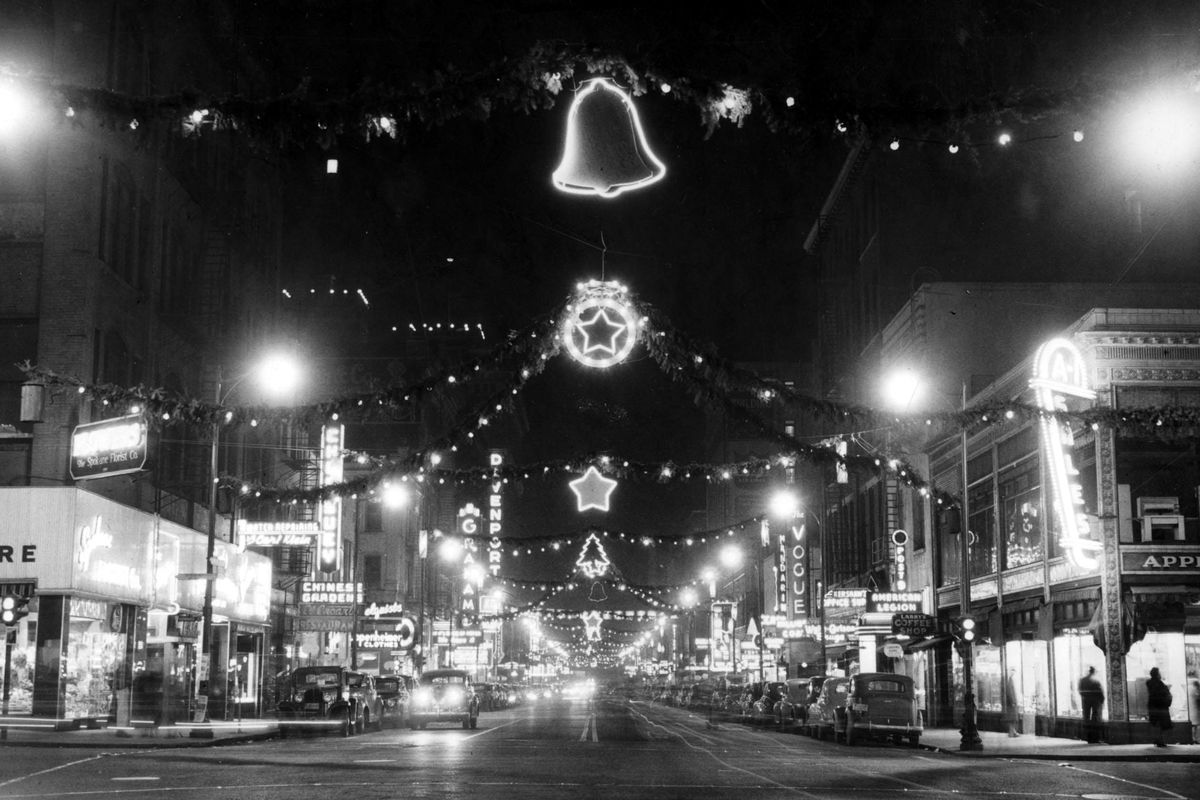Then and Now: Spokane Christmas through the years

The journals of the Lewis and Clark expedition show the explorers exchanged simple Christmas gifts like tobacco, extra rations or a pair of moccasins while trekking through the West from 1803 to 1806. The first Christmas celebrations in the Spokane area may have been at the North West Company’s trading post, Spokane House, according to a Spokesman-Review story from 1928. Later, missionaries wrote of simple Christmas celebrations among the Indian converts in the 1830s and 1840s.
The first account of Christmas in downtown Spokane was an 1874 gathering of the entire population – five families with eight children. Early settler H.T. Cowley wrote, “Notwithstanding the drawbacks of securing anything but the barest necessities of life, it was resolved that winter to celebrate the holidays in the most elaborate manner in the command of the little community. Mrs. Glover, Mrs. Yeaton, Mrs. Cowley, Mrs. Swift and Mrs. Poole combined their resources and probably no more enjoyable Christmas tree and dinner and New Year’s dinner ever gladdened the hearts of the children who participated in it.”
While there would be clashes with the Indian tribes over the next few years, Cowley went on to write, “The Indians also observed the festivities in their own peculiar way, and the bonds of peace and good will were strengthened all around.”
W.C. Gray, proprietor of the California House, recounted an earlier holiday to a reporter in 1924: “The Christmas celebration in 1878 was held at the (James) Glover’s house and it was a five-room place, half logs and half boards. The weather was just like now, mild and moderate, and we sang Christmas carols, the same as we sing today, ‘Silent Night,’ ‘When Shepherds Watched Their Flocks by Night’ and others. Mrs. Glover played the organ and afterwards she served refreshments of cake, coffee and apples.”
Frank M. Dallam, who founded the Spokane Review newspaper in 1883, reminisced in 1927 about his first Christmas in Spokane. “There were little people in the family in those days and as Christmas is especially important to small tots, it was up to the parents to make the occasion for them as happy as possible. The very few stores in existence made no provision for Christmas and there was no trinket of any kind that would appeal to children. Not a book or plaything on the counters or the shelves.” Dallam remembered that they found some nuts “that looked as though they had come across on the Mayflower” and a few pounds of stick candy. His wife fashioned dolls out of cloth.
“(When) the light broke forth on that Christmas morning in 1883 and those children rushed frantically for their stockings, there was not, in all probability, a happier family in the sparsely settled Eastern Washington. It touches the heartstrings to look back and think back to that Christmas of so long ago, so many happy ones since that time, and yet few were more happy, for our wants were few and there was little difficulty in supplying those wants.”
Jesse Tinsley